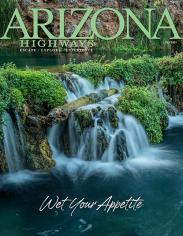Mount Ord
Payson Ranger District, Tonto National Forest
Some scenic drives require a certain amount of commitment. Whether it’s time, vehicle requirements or sheer guts, you often have to give a little in order to get Arizona’s spectacular views in return. Fortunately, the drive to Mount Ord is the exception. No sacrifice is required. In fact, this drive is more about bang than buck, so to speak. The views are breathtaking, the trip itself is quick and the fist-clenching moments are few and far between.
